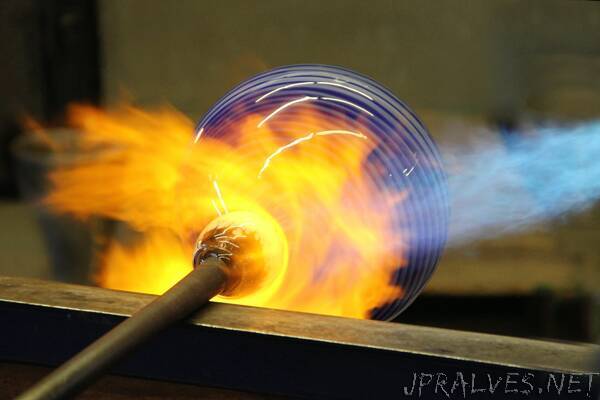
“As time passes, glass restructures itself towards more stable configurations which can affect its properties. Given that glass has numerous practical applications, knowing how this transition takes place is highly relevant. Researchers from the UAB Department of Physics and from the ICN2 explain how they studied the details of glass transition and observed how the restructuring of glass when turning into liquid is not always a homogeneous process, depending more on the temperature instead of the initial stability of the glass.
Starting from the windows of our houses to communication via optical fiber, pharmaceuticals, the plastic industry or organic electronics, disorder is present in our lives. All these materials share a common characteristic, the lack of short-range order of the atoms and molecules that form the material, they are what we call glasses. This disorder has advantages such as transparency, better solubility, elasticity or homogeneity, depending on the material and the use you want to give it.
But there are also disadvantages. The glasses are energetically unstable, which means that over time they will restructure towards more stable configurations. This implies changes in their properties, which means that perhaps a drug ceases to be as effective or that the rubber sole of your shoe becomes fragile and fractures when walking (and you must walk in socks in the middle of the mountain, real story). This restructuring of the glass constituents is favored by increasing the temperature since the atoms/molecules will have greater mobility, which will facilitate the system to explore more stable configurations. In fact, at a certain temperature (the glass transition temperature) the system acquires sufficient mobility to transit to the equilibrium state, the supercooled liquid. This is a very viscous liquid, but a liquid after all, which can flow slowly and reconfigure itself according to external stimuli.
Given this scenario, one would conclude that, considering the extensive use of glasses in our day to day, the physical processes that regulate the behavior of glasses as a function of time and temperature should be known and understood in detail today, and this is not the case. These are complex processes, which have been studied for more than 100 years and that no theory has been able to explain completely.
To date it is known that the restructuring of a glass during the glass transition takes place by a cooperative relaxation, in which some areas of the glass, which have greater mobility, induce movement in adjacent areas, producing a collective restructuring, which occurs practically homogeneously throughout the glass, gaining mobility progressively.
In this article, we demonstrate that this is not always the case. Under specific conditions, the transit from glass to supercooled liquid takes place by the appearance of liquid zones, with high mobility, which grow and expand rapidly towards the most stable regions of the glass, distinguishing two zones with very differentiated mobility, liquid and glass. For this to happen, the mobilities of the original glass and the liquid must be very different and this difference depends strongly on the actual temperature. In the article we show that the mechanism by which the glass transits to the liquid will depend exclusively on the temperature at which it is located and will be independent of its initial stability. In order to achieve this result, it has been essential to use nanoscale systems (thin layers) and experimental techniques such as nanocalorimetry, which allows measuring in temperature and time ranges which are inaccessible by conventional experimental techniques.
This is a result that opens the door to new theories that will allow us to understand to a greater extent the process of glass restructuring, of vital importance to extend its use in a greater number of applications.”
